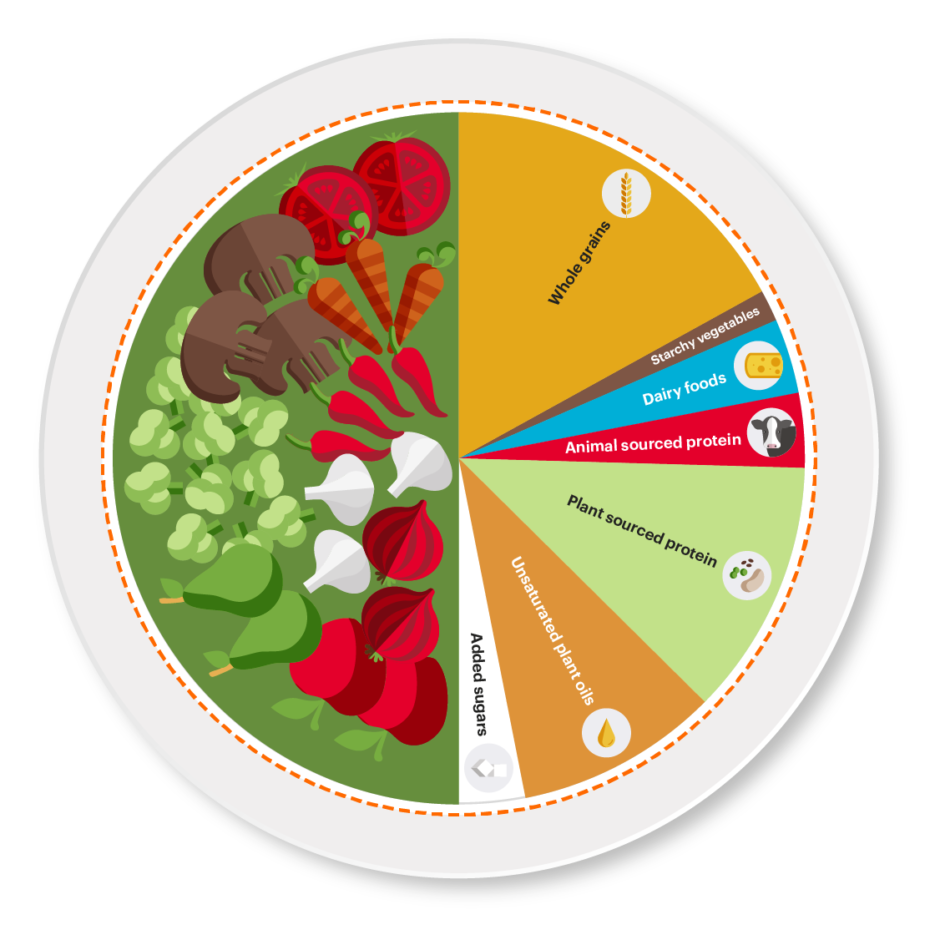
The first step towards treating orthorexia involves identifying the root cause. Orthorexia is often caused by anxiety and self-doubt. You or your loved ones may need counseling if you have orthorexia. Orthorexia can make people extremely perfectionists. You need to help them improve their perfectionism and not make them feel bad about eating.
It is important to understand why someone suffering from orthorexia has a eating disorder. People with the disorder are able to classify different food types into "good" or "bad" categories. These "good food" foods are generally clean and pure and meet strict nutritional quality requirements. The opposite is true for "bad" foods. Although eating "good" food can increase an individual's senses of achievement, it can also cause them to feel very sad and isolated.

It can be challenging to diagnose orthorexia because some patients may not be aware of the adverse effects of their eating habits. This is especially true for those who are not aware of the effects their eating habits have on their overall health. It's important for those with orthorexia to seek treatment from a multidisciplinary team that includes a physician, psychologist, and registered dietitian. Even though these therapies have been successful, you might want to consult your doctor first for a proper diagnosis.
While the cause of orthorexia is still not clear, it is thought to be a result of emotional dysregulation, lack of self-esteem, social isolation, and lack of self-esteem. In addition to affecting an individual's social life, it can also lead to a range of medical problems, including cardiovascular disease and heart disease. People with orthorexia may also be more inclined to isolate themselves from others due to rigidity in their diet.
The underlying causes of orthorexia are not yet fully understood, but the symptoms are common. Many orthorexia sufferers have experienced severe weight loss and malnutrition. These symptoms may not be visible to others, but they can be treated. Orthorexia is something that should be treated if you are concerned about someone you love. Orthorexia is a condition that a doctor can not diagnose, but it can be treated.

Orthorexia is a condition where people have difficulty with food. They may feel that they are worthless if they don't eat right. They feel that their health and happiness depend on their eating habits. This bad habit can be detrimental to your health and lead to emotional dependence. There are options available to help with this problem. There are treatments for eating disorders that can be used to treat them.
FAQ
Are there 5 ways to have a healthy lifestyle?
Living a healthy lifestyle includes eating right, exercising regularly, getting enough sleep, managing stress, and having fun! Eating well means avoiding processed foods, sugar, and unhealthy fats. Exercise strengthens your muscles and helps you lose calories. Getting enough sleep improves memory and concentration. Stress management reduces anxiety, depression and other symptoms. Fun keeps us vibrant and young.
Does being cold give you a weak immune system?
Cold can make you less immune to infection because your body makes fewer white blood cells, which are essential for fighting infections. You will feel less pain if you are cold.
What is the healthiest lifestyle to life?
Living a healthy lifestyle is one that encourages you to eat well, exercise regularly, get enough sleep, and avoids stress. These guidelines will help you live a long, healthy life.
Starting small can make a big difference in your diet, and even your exercise routine. For example, if you want to lose weight, try walking for 30 minutes every day. Or, if you want to get more active, take up swimming or dancing. You could also join an online fitness program like Fitbit or Strava that tracks your activity levels.
How do you measure body fat?
A Body Fat Analyzer will give you the most accurate measurement of body fat. These devices are used to determine the percentage of bodyfat in people who desire to lose weight.
What is the problem?
BMI stands for Body Mass Index, which is a measurement of body fat based on height and weight. The following formula is used to calculate BMI:
The weight of a kilogram divided by its squared height in meters.
The result is expressed as a number from 0 to 25. Scores between 0 and 25 indicate obesity. A score of 18.5 indicates overweight. A score of 23 indicates obesity.
A person of 100 kg with a height of 1.75m will have 22 BMI.
How much should you weigh for your height and age BMI calculator & chart
To determine how much weight loss you need, a BMI calculator is your best friend. A healthy BMI range is between 18.5 and 24.9. To lose weight, you should aim for a loss of 10 pounds per year. Enter your height and weight to calculate your BMI.
This BMI chart shows you if it is possible to identify if you are either overweight or obese.
Statistics
- Extra virgin olive oil may benefit heart health, as people who consume it have a lower risk for dying from heart attacks and strokes according to some evidence (57Trusted Source (healthline.com)
- WHO recommends consuming less than 5% of total energy intake for additional health benefits. (who.int)
- WHO recommends reducing saturated fats to less than 10% of total energy intake; reducing trans-fats to less than 1% of total energy intake; and replacing both saturated fats and trans-fats to unsaturated fats. (who.int)
- nutrients.[17]X Research sourceWhole grains to try include: 100% whole wheat pasta and bread, brown rice, whole grain oats, farro, millet, quinoa, and barley. (wikihow.com)
External Links
How To
What does the meaning of "vitamin?"
Vitamins are organic compounds that can be found in foods. Vitamins are necessary for us to absorb nutrients in the foods we consume. Vitamins are not made by the body, so they must be obtained through food.
There are two types if vitamins: water soluble, and fat soluble. Water-soluble vitamins dissolve easily when they are dissolved in water. Some examples include vitamin C,B1 and B2 vitamins (thiamine), B2 and riboflavin, B3 and B6 vitamins (niacin), folic acids, biotin, pantothenic acids, and cholesterol. The liver and fat soluble vitamins are stored within the liver and in fatty tissue. Some examples include vitamin D and E, K, A and beta carotene.
Vitamins are classified according their biological activity. There are eight major categories of vitamins.
-
A - Essential for healthy growth and health maintenance.
-
C – essential for proper nerve function.
-
D - Essential for healthy teeth and bones.
-
E - needed for good vision and reproduction.
-
K - essential for healthy muscles, nerves, and bones.
-
P – vital for building strong bones.
-
Q - Aids in digestion and absorption.
-
R – Required for the formation of red blood vessels.
The recommended daily allowance (RDA), for vitamins, varies depending upon age, gender, or physical condition. The U.S. Food and Drug Administration has established the RDA values.
For adults over 19, the RDA for vitaminA is 400 micrograms per daily. Pregnant mothers need 600 micrograms per days because it is vital for the development and growth of their baby. Children ages 1-8 require 900 micrograms per day. For infants younger than one year, 700 micrograms are required daily. However, this number drops to 500 micrograms each day for children aged 9-12 months.
Children aged between 1-18 years require 800 micrograms of sugar per day, while overweight children need 1000 micrograms. Children who are underweight receive 1200 micrograms every day to meet their nutritional requirements.
Children between 4 and 8 years old with anemia will need 2200 micrograms daily of vitamin C.
Adults over 50 years of age need 2000 micrograms per day for general health. Due to their increased nutrient needs, pregnant and breastfeeding women need 3000 micrograms daily.
1500 micrograms are required daily by adults over 70 because they lose approximately 10% of their muscle each decade.
Women who are pregnant and lactating need more nutrients than the RDA. Pregnant mothers need 4000 micrograms per daily during pregnancy and 2500 after giving birth. Breastfeeding mothers require 5000 micrograms daily when breast milk production is occurring.